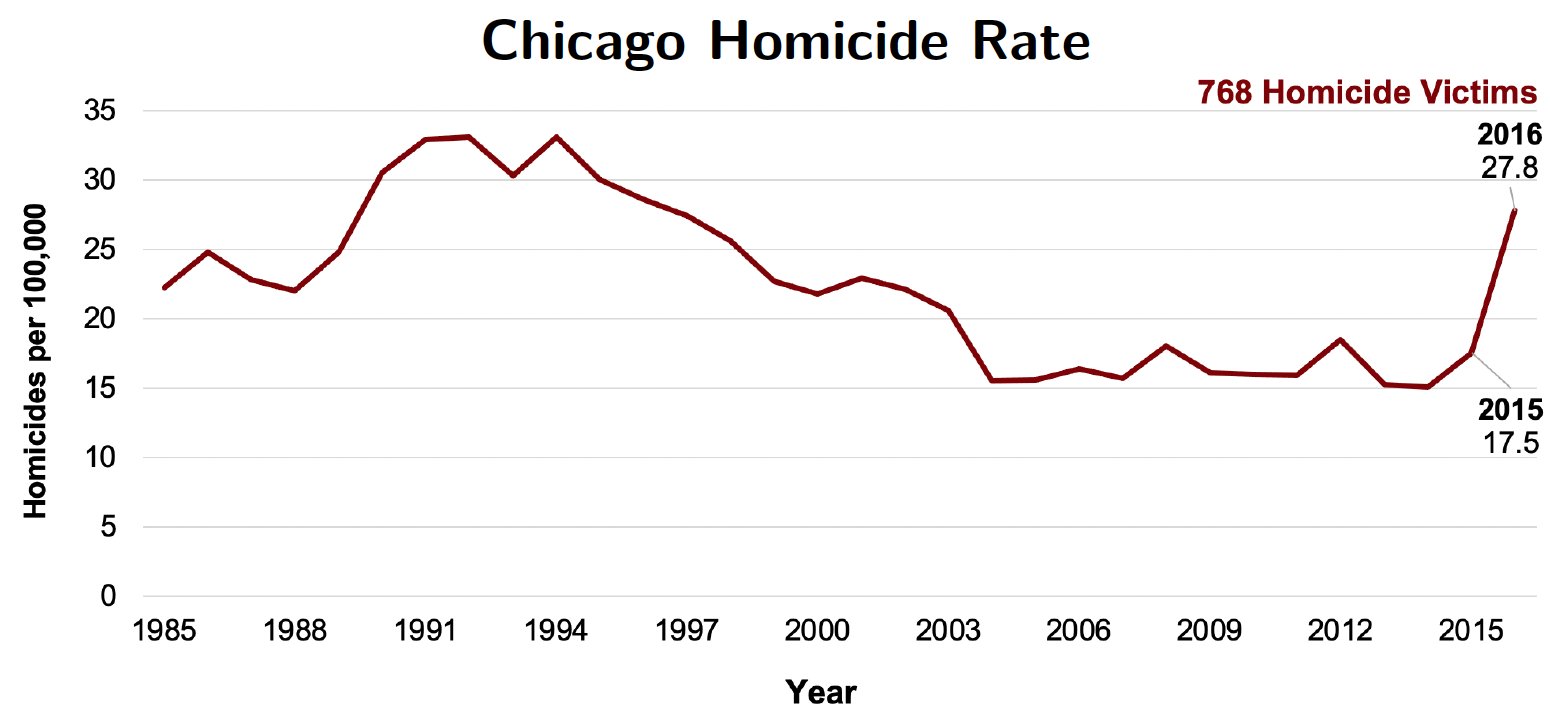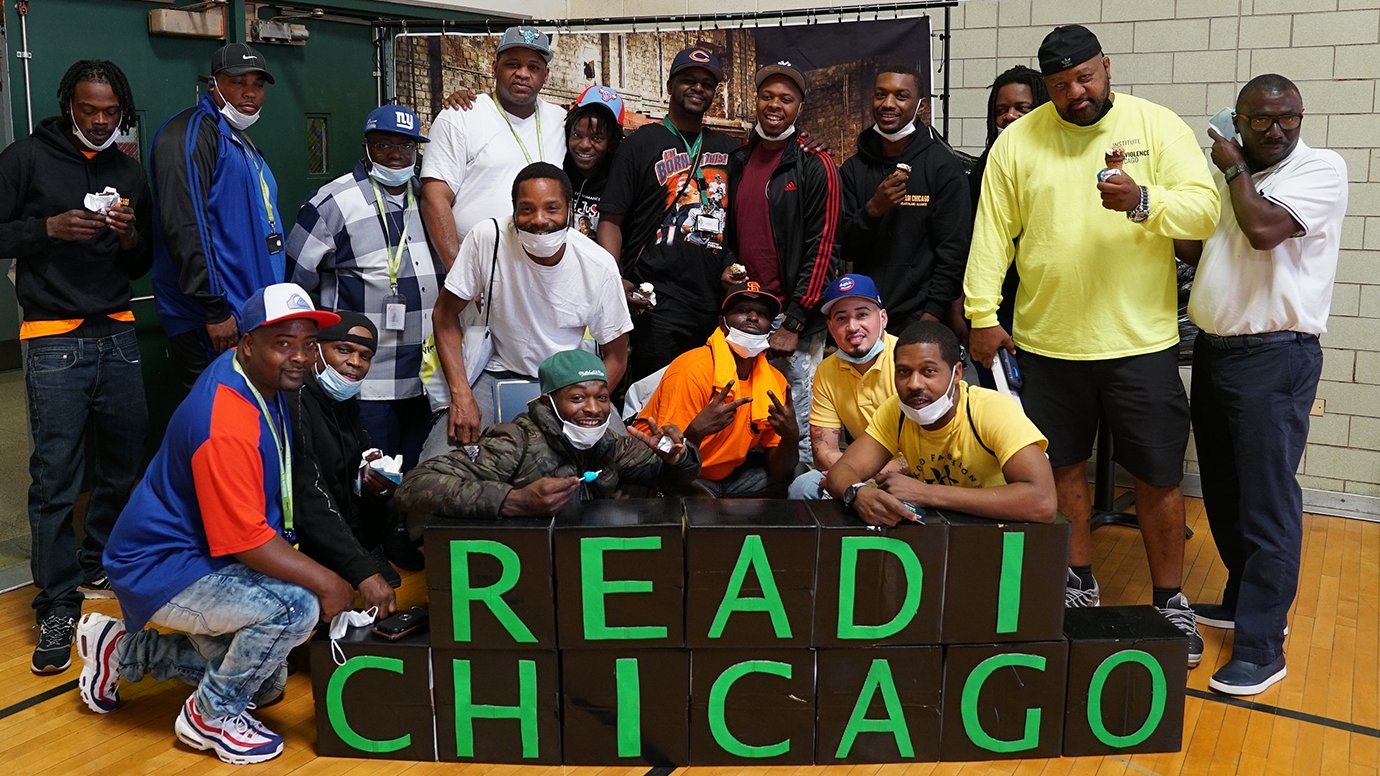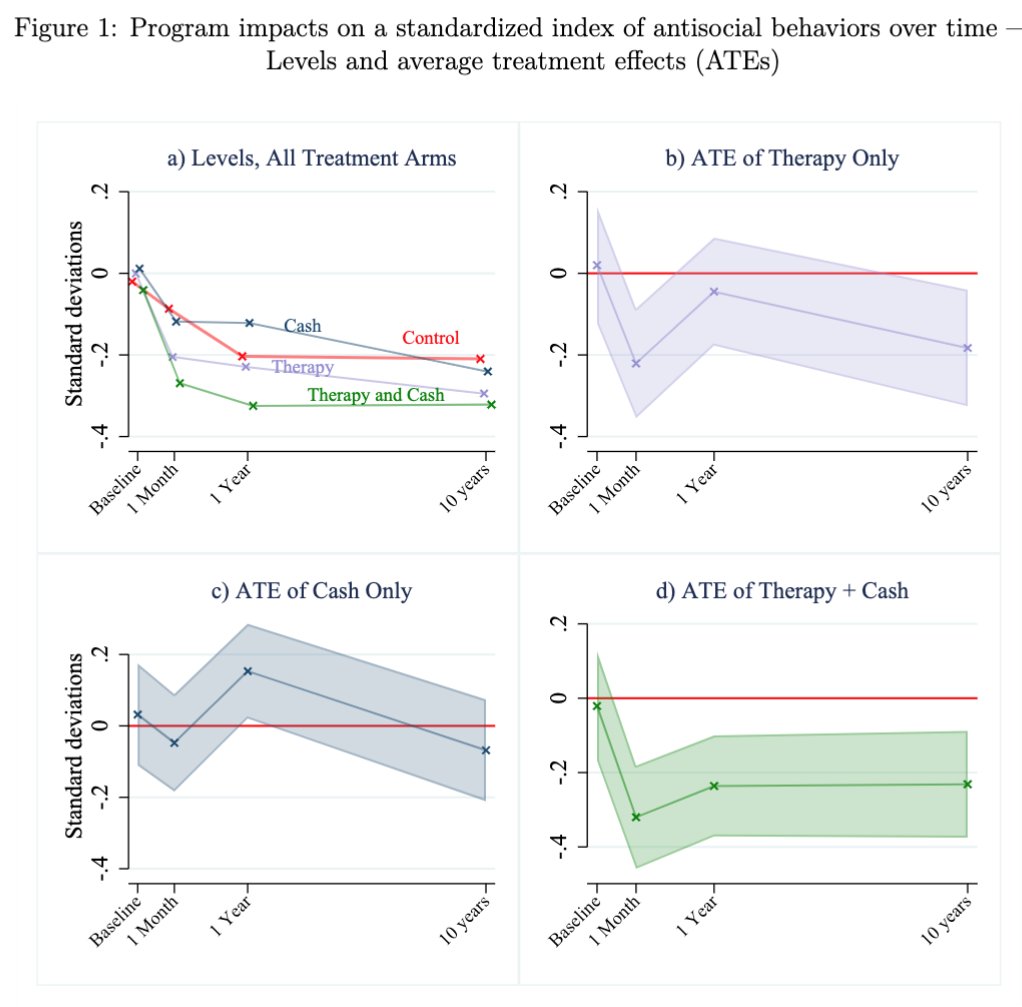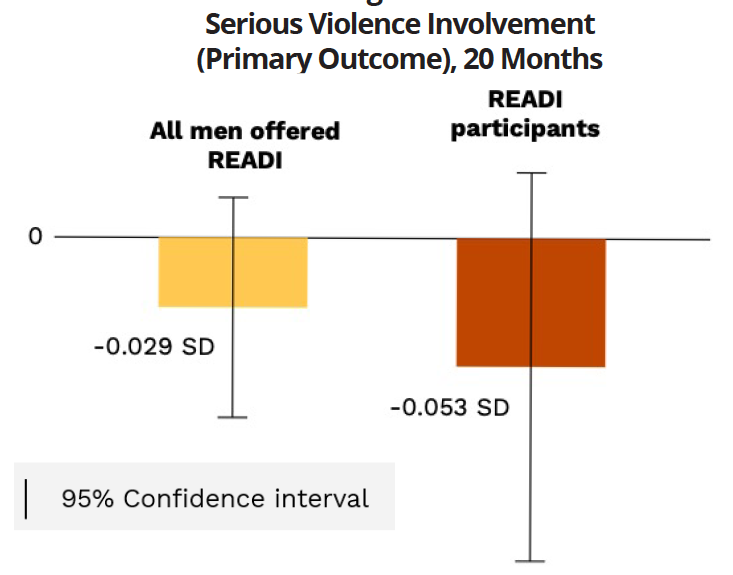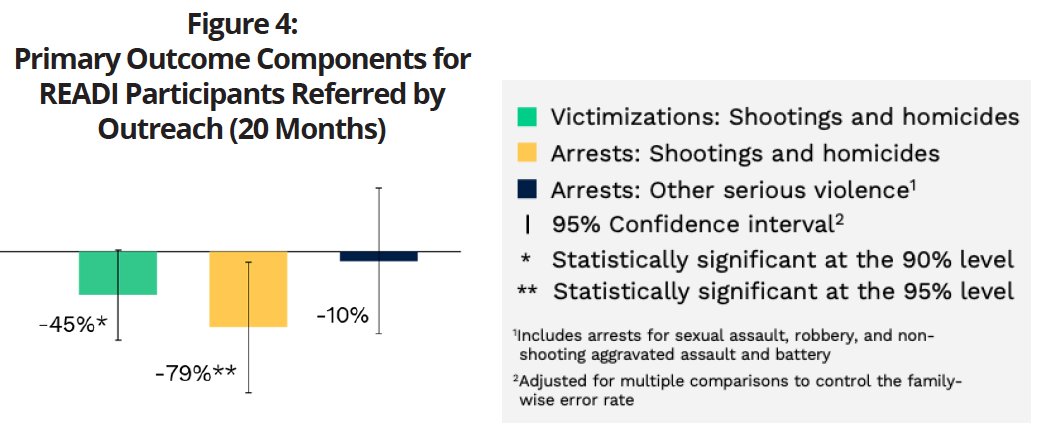Thread
Here's the story of a city's response to spiking gun deaths. Of READI Chicago—an ambitious effort to build & study a program of jobs & CBT for the men most likely to shoot or be shot. Of HUGE success by some measures (64% fewer shooting & homicide arrests!) & no impact by others.
I'd love to tell you "we have the answer!" but, like most urban problems, gun violence is messy & hard to solve. So settle in for a more nuanced story than usual, yet one that ends with a clear message: helping men who shoot (& get shot) is possible, essential, and works.
If you just want the academic paper or policy note, both dropped this week. Here are links. The research team is me, @MonicaPBhatt, Sara Heller, Max Kapustin, Marianne Bertrand + a huge team @UChiUrbanLabs
Paper: osf.io/preprints/socarxiv/dks29
Policy note: urbanlabs.uchicago.edu/attachments/e915e1e2f650b27289a2820630bac8d51da86829/store/dca30e5ef9a71f25a90...
Paper: osf.io/preprints/socarxiv/dks29
Policy note: urbanlabs.uchicago.edu/attachments/e915e1e2f650b27289a2820630bac8d51da86829/store/dca30e5ef9a71f25a90...
READI began with an unprecedented response from the city's street outreach orgs, jobs providers, NGOs, city government, family foundations, and other philanthropists. They asked a simple question: What can we do and how fast?
Most of all, they wanted to do something that worked.
Most of all, they wanted to do something that worked.
One possible answer came from @YG_Chicago's Becoming A Man program (+ randomized trials) by Sara Heller & colleagues.
School-based cognitive behavioral therapy (CBT) for teens cut violent-crime arrests in half and boosted high school graduation by 20%.
urbanlabs.uchicago.edu/projects/becoming-a-man
School-based cognitive behavioral therapy (CBT) for teens cut violent-crime arrests in half and boosted high school graduation by 20%.
urbanlabs.uchicago.edu/projects/becoming-a-man
Another answer came from my work in West Africa, and a little organization called NEPI (@NEPI36537772). They targeted ex-fighters from the war and violent street youth. An 8-week program of CBT + $200 to start a small enterprise, for a total cost of $500
Along with @sebchaskel, @julianjamison & @masherid I helped them run a randomized trial. We followed the men for 10 years and showed that this little program reduced crime and violence by about half!
osf.io/preprints/socarxiv/q85ux/
osf.io/preprints/socarxiv/q85ux/
But Chicago's gun violence spike was different. These weren't delinquent high schoolers, or youth engaged in petty crime & knife fights. These men were engaged in violence far more lethal and serious. Not just territorial disputes between fractious neighboring crews, but also...
...longtime blood feuds seeking vengeance for a past offense, hot-headed responses to perceived slights, and a dozen other disputes between men in small "cliques" and "mobs"—groups far too disorganized to deserve the label "gangs".
Could you predict who would shoot or get shot? Could they be found? If found, would they even join a program? And, assuming you got that far, could CBT + jobs actually stop something as serious as shootings in such a hard core population? We thought yes, but honestly no one knew.
To find out, @HeartlandHelps mobilized street outreach orgs, job providers, therapists & researchers to run an enormous program. Together we'd try recruit almost 2500 of the highest-risk men in the city and offer half 18 mo of work plus 10h of CBT a week.
www.heartlandalliance.org/readi/
www.heartlandalliance.org/readi/
We recruited 2 main ways: algorithm & community referral. (This will be key.)
Referrals came mainly from outreach organizations dedicated to identifying who in their community would shoot or get shot. Many leaders & staff came from backgrounds like the men READI aimed to help.
Referrals came mainly from outreach organizations dedicated to identifying who in their community would shoot or get shot. Many leaders & staff came from backgrounds like the men READI aimed to help.
The algorithm took arrest & victim data and trained models predicting who would shoot/be shot. An AI-driven approach, designed to get at the men off the radar of street outreach.
Both approaches identified men at incredible risk. For every 100 men in the control group, there were >11 shootings or deaths in the 20 months of the study! This shows it's possible to find these men. It also shows how important it is to extend services like READI (if they help).
Personally, I've spent 18 years working with fighters in civil wars, in villages cleaved by ethnic violence, and among gang & mafia members around the world. I never met people living lives as risky, violent & tenuous as the men I met in neighborhoods a couple miles from my home.
Another discovery: the men wanted this opportunity. More than 3/4 of outreach referrals came for at least a day, and most of those kept coming. Among algorithm referrals, fewer joined, but this was mainly because they were impossible to find. When found, a majority were keen.
(A shoutout to the outreach workers here. They were ingenious & relentless & essential. Tracking men down over months with nothing more than a name, mugshot + outdated address. Cold calling some very risky guys. Knocking on doors. On the street every day trying to save lives.)
We and @heartlandhelps used a lottery to offer the program. Of the 2,456 men identified, half got an offer to join READI. We tracked them for 20 mo the only way we could: in records of criminal arrests + records of being shot (b/c of mandatory reporting by hospitals).
Now for results. Here's where things get nuanced. Huge impacts on some measures but not others. Huge impacts in some groups but less certain in others. We strove at every step not to cherry pick certain results + to be totally transparent, but also not to be too conservative.
Overall, being shot ⬇18%, but this is statistically imprecise. Being arrested for lesser violent crimes ⬆13%, also statistically imprecise. Arrests for shootings and homicides ⬇64%. This is statistically significant on its own. But not after we adjust the test for 3 outcomes.
Frankly, we thought all three measures would move in the same direction, which is why we pre-committed to an average of all 3 as the primary measure of success. And by that measure, READI only weakly reduced violence.
BUT.
BUT.
Big but #1. This is a 64% reduction in arrests for trying to kill people! Who cares if the effect is only marginally significant after adjusting for multiple hypotheses? In all honesty: Good enough for me to keep programs like READI running.
Big but #2. Above we averaged the 3 outcomes equally. What if we weight them by their cost to society? We pre-committed to do this too. Murders cost the most. When we do that, the reduction in harm is huge and highly statistically significant.
By this calculation, READI’s benefit-cost ratio from reducing crime and violence alone—not counting any other benefits to communities or participants—is at least 4 to 1 and as high as 19 to 1.
Big but #3. We also pre-committed to look at effects by referral pathway. And here was a surprise. READI significantly reduced violence across the board in the community referral group—shooting/homicide arrests ⬇79% and being shot ⬇45%!
What is going on? Honestly, this defied our expectations & we do not know for sure.
One hypothesis, backed by months of formal field observations + qualitative interviews, is that outreach workers were able to identify men who were "ready"—willing to engage + responsive to CBT.
One hypothesis, backed by months of formal field observations + qualitative interviews, is that outreach workers were able to identify men who were "ready"—willing to engage + responsive to CBT.
Another possibility is that they were driven to succeed because of the relationships they had built with outreach workers. Or because they were more likely to have friends in the classroom. We just don't know for sure.
Even so, it's clear that the algorithm is important. We still see reductions in arrests for shootings/homicides (imprecise as they are) & within the community referral the algorithm predicts who is most responsive to READI. So AI and people can work together.
Please understand that these results are the hardest for social scientists to report—large and only sometimes statistically significant. It's painful. Especially when there are gun violence programs making big claims without randomized control groups. Be careful what you believe.
But believe this: it's clear there is something here. More cities need to tinker with the READI program and recruitment. But study after study is telling us that there are ways to reduce violence that don't rely solely on harassment + incarceration.
NOTE: This doesn't mean CBT+jobs will automatically work in your city. Too much crime policy (or policy in general) is "this worked in NYC, let's do it here"
That's like saying "This treatment worked for cancer, let's try it for my broken ankle." Treatment follows diagnosis.
That's like saying "This treatment worked for cancer, let's try it for my broken ankle." Treatment follows diagnosis.
Programs like BAM, NEPI's & READI work because they tackle one root of violence head on: the inability of small groups of young men to handle disputes peacefully, of norms that push them to use violence hastily, & a lack of tools to handle emotions + rivalry another way.
If that's the dynamic in your city, then there;'s a good chance something that involves CBT, employment, and other services will have a powerful impact for at least some men. And we need more bold experiments like READI to figure out what and how.
If you believe in diagnosis before treatment & understanding why violence happens, I have 3 books for you.
1. Views From the Streets is the best account I've read of violence in Chicago today. A good way to see if you city has the same roots of violence.
amzn.to/3Xi4T99
1. Views From the Streets is the best account I've read of violence in Chicago today. A good way to see if you city has the same roots of violence.
amzn.to/3Xi4T99
2. Bleeding Out by @Abt_Thomas shows how different violence programs tackle different problems. CBT+jobs helps manage volatile emotional rivalries, but not necessarily others like decades-long blood feuds, or business incentives to kill.
amzn.to/3waQyPO
amzn.to/3waQyPO
3. Finally my book Why We Fight starts in Chicago but takes you to West Africa, World Wars, US invasions, and everything in between to show how all these forms of violence have a few common diagnoses and logics. Gangs, ethnic groups & nations
amzn.to/3GRfSQ1
amzn.to/3GRfSQ1
Want more but a paper or book sounds like too much? Listen to me and Sara tell the story of violence prediction and programs on NPR's @HiddenBrain
Thanks for reading this far!
/END
hiddenbrain.org/podcast/making-the-world-a-safer-place/
Thanks for reading this far!
/END
hiddenbrain.org/podcast/making-the-world-a-safer-place/
Mentions
See All
Alex Tabarrok @ATabarrok
·
Jan 20, 2023
Important thread.
sharesocial @sharesocial
·
Nov 28, 2025
- Post
Cách bảo vệ tài khoản khi ee88 đăng nhập trên mạng công cộng
Trong thời đại số hóa hiện nay, việc truy cập các nền tảng giải trí trực tuyến như ee88 trở nên phổ biến hơn bao giờ hết. Tuy nhiên, cùng với sự tiện lợi đó, nguy cơ rủi ro về bảo mật tài khoản cũng tăng cao, đặc biệt là khi người dùng đăng nhập trên các mạng công cộng như Wi-Fi quán cà phê, sân bay hay các điểm truy cập miễn phí khác. Vì vậy, cách bảo vệ tài khoản khi ee88 đăng nhập trên mạng công cộng là vấn đề mà mọi người chơi cần đặc biệt lưu ý để tránh bị lộ thông tin cá nhân hoặc mất tiền.
https://pad.flipdot.org/s/aU8Tsk27Q
https://hedgedoc.dezentrale.space/s/QHyL5asJA
https://md.entropia.de/jgBb9TZUQQS49U5_XnV40g
https://pad.fablab-siegen.de/s/Zm9HnJORO
https://pad.darmstadt.social/s/yi0kcA_YT
https://pad.codefor.fr/s/ptMLIkT_q
https://md.darmstadt.ccc.de/s/gcv7hflLz
https://hedgedoc.stusta.de/s/BappFjPxm
https://hackmd.hub.yt/s/SWglu2KLG
